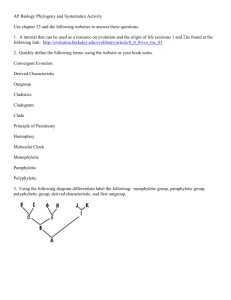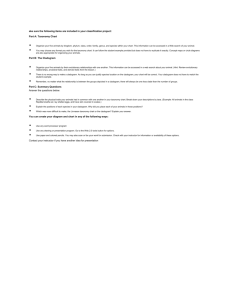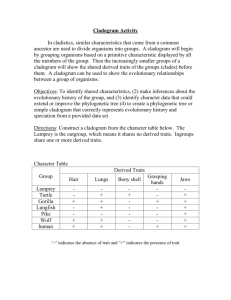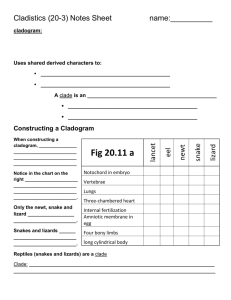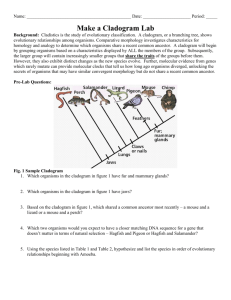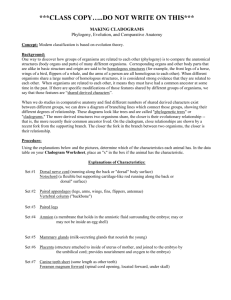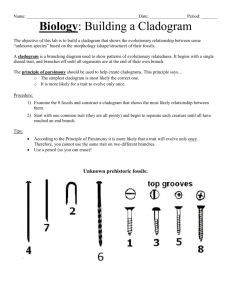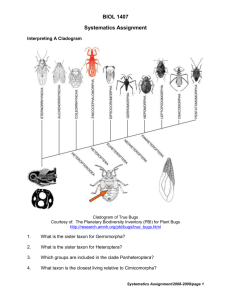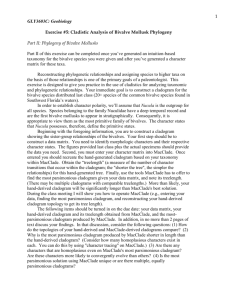Evolution for Animals Based on All Four Systems
advertisement
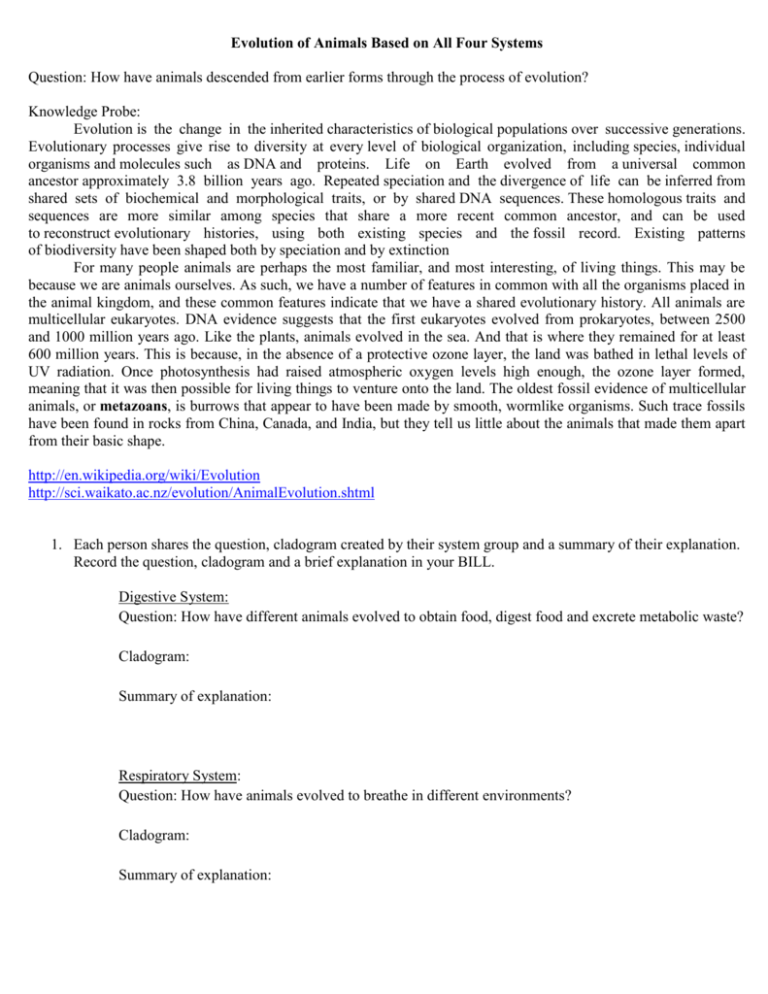
Evolution of Animals Based on All Four Systems Question: How have animals descended from earlier forms through the process of evolution? Knowledge Probe: Evolution is the change in the inherited characteristics of biological populations over successive generations. Evolutionary processes give rise to diversity at every level of biological organization, including species, individual organisms and molecules such as DNA and proteins. Life on Earth evolved from a universal common ancestor approximately 3.8 billion years ago. Repeated speciation and the divergence of life can be inferred from shared sets of biochemical and morphological traits, or by shared DNA sequences. These homologous traits and sequences are more similar among species that share a more recent common ancestor, and can be used to reconstruct evolutionary histories, using both existing species and the fossil record. Existing patterns of biodiversity have been shaped both by speciation and by extinction For many people animals are perhaps the most familiar, and most interesting, of living things. This may be because we are animals ourselves. As such, we have a number of features in common with all the organisms placed in the animal kingdom, and these common features indicate that we have a shared evolutionary history. All animals are multicellular eukaryotes. DNA evidence suggests that the first eukaryotes evolved from prokaryotes, between 2500 and 1000 million years ago. Like the plants, animals evolved in the sea. And that is where they remained for at least 600 million years. This is because, in the absence of a protective ozone layer, the land was bathed in lethal levels of UV radiation. Once photosynthesis had raised atmospheric oxygen levels high enough, the ozone layer formed, meaning that it was then possible for living things to venture onto the land. The oldest fossil evidence of multicellular animals, or metazoans, is burrows that appear to have been made by smooth, wormlike organisms. Such trace fossils have been found in rocks from China, Canada, and India, but they tell us little about the animals that made them apart from their basic shape. http://en.wikipedia.org/wiki/Evolution http://sci.waikato.ac.nz/evolution/AnimalEvolution.shtml 1. Each person shares the question, cladogram created by their system group and a summary of their explanation. Record the question, cladogram and a brief explanation in your BILL. Digestive System: Question: How have different animals evolved to obtain food, digest food and excrete metabolic waste? Cladogram: Summary of explanation: Respiratory System: Question: How have animals evolved to breathe in different environments? Cladogram: Summary of explanation: Circulatory System: Question: How have animals evolved complex, efficient ways to move materials through their bodies? Cladogram: Summary of explanation: Reproductive System: Question: What are the different strategies animals have evolved to help them produce offspring? Cladogram: Summary of explanation: Prediction: 2. Using all four cladograms above, the links above, your external anatomy table and further research create a cladogram for animal evolution overall including information from all four systems. At each branch be sure to include what adaptation is novel to cause the separation from the ancestor. Record your cladogram in your BILL. Explanation: 3. Write a claim, evidence and reasoning based on the question at the beginning of our dissection activity: How have animals descended from earlier forms through the process of evolution? Use your cladogram from #2 to help provide your evidence and reasoning. Be sure to include information on all systems and all animals. Record your response in your BILL. Evaluation: 4. Put your cladogram on the board and compare all the cladograms to answer the following questions in your BILL. a. Did they have the same pattern for evolution? If not what was different? b. Did they have the same key adaptations for the branching from the common ancestor? If not what was different? c. Go to the link http://bit.ly/cladogramexample How does your cladogram compare to this one? Explain where they are different. Why do you think it is different?

